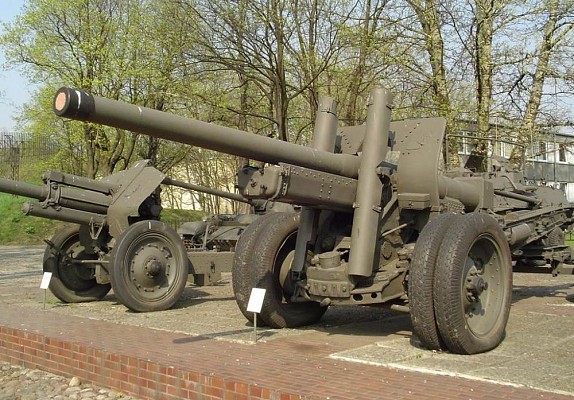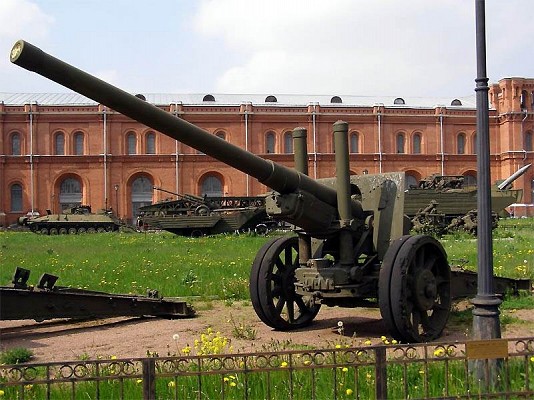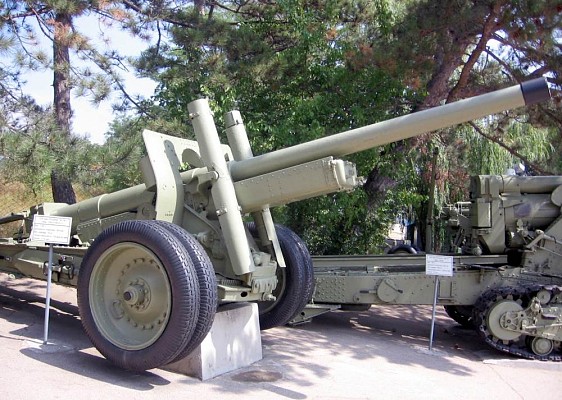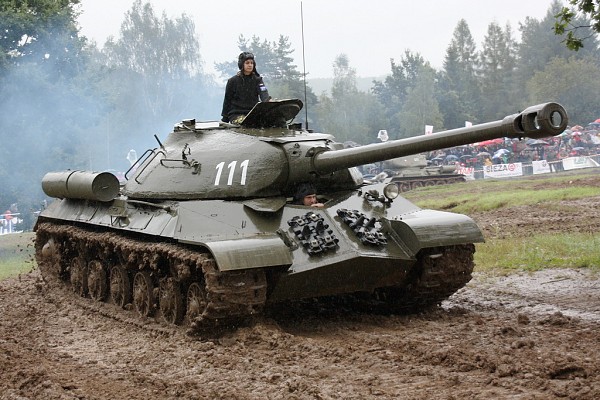122mm A-19
Overview

122mm M1937
M1937 towed gun on display in a museum.
Source: Lukasz -
© GNU Attribution - Share Alike license
F.F. Petrov (M1937)
1939 - 1946 (M1937)
Soviet Union - Motovilikha plant (1941 - 1946)
About 2.450 M1937
52-P-471A (GRAU index for M1937)
12.2 cm K.390/1(r) (Beutewaffen index for M1931)
12.2 cm K.390/2(r) (Beutewaffen index for M1937)
122 K 31 (Finnish designation for both models)
122/46 (russo .31) (Spanish service)
122 mm armata wz. 1931/37/85 (Poland)
Nazi Germany
North Korea
Description
Introduction
The A-19 is a World War 2 era towed howitzer of Soviet origin. It was used alongside the larger caliber ML-20 as a corps gun. Due to its quality it remained in use after World War 2. Vehicle mounted versions of the ordnance were used in the ISU-122 self-propelled gun and IS-2 and IS-3 heavy tanks.
Design
The A-19 was designed as a long range weapon and is fitted with a long barreled 122mm howitzer without muzzle brake. A gun shield gives the crew of 9 men some protection from small arms fire over the frontal arc. The original two wheel split trail carriage used large rigid wheels. After a few years production the carriage of the ML-20 was used.
Firepower
The A-19 fires 122mm shells out to 20.4 km. A long range for World War 2 standards. The rate of fire is 3 to 4 rounds per minute. If needed the A-19 can be used for direct fire, but it's size and weight make it inconvenient to use in this role. It proved to be able to knock out the latest German tanks.
Mobility
Artillery tractors were used to move the A-19 since the A-19 is too heavy to be moved by hand. The improved M1937 model with the ML-20 carriage has pressurized tires and is easier to tow.
Users
The A-19 was widely used by Soviet forces during World War 2. Up to 400 guns were captured by Nazi Germany and pressed into service. After the war the A-19 remained in use and was replaced by the more capable M-46. Surplus weapons were widely exported to Soviet allies and remained in use in the Middle East, Africa and Asia as late as the 1980's. Small numbers may still remain in reserve.
Variants

M1931
The M1931 is the original version of the A-19. The ordnance is installed on a two wheel split trail carriage with large iron wheels with rigid rubber tires.

M1937
The improved M1937 uses the ordnance of the M1931 and the more capable carriage of the 152mm ML-20 gun-howitzer. This makes the weapon easier to handle, improves mobility and reduced the production costs. The firing characteristics remain unchanged. The M1937 is also referred to as the M1931/37 or M1931/1937.
Details
Related articles

IS-3
The 122mm D-25T main gun of the IS-3 heavy tank was derived from the A-19.